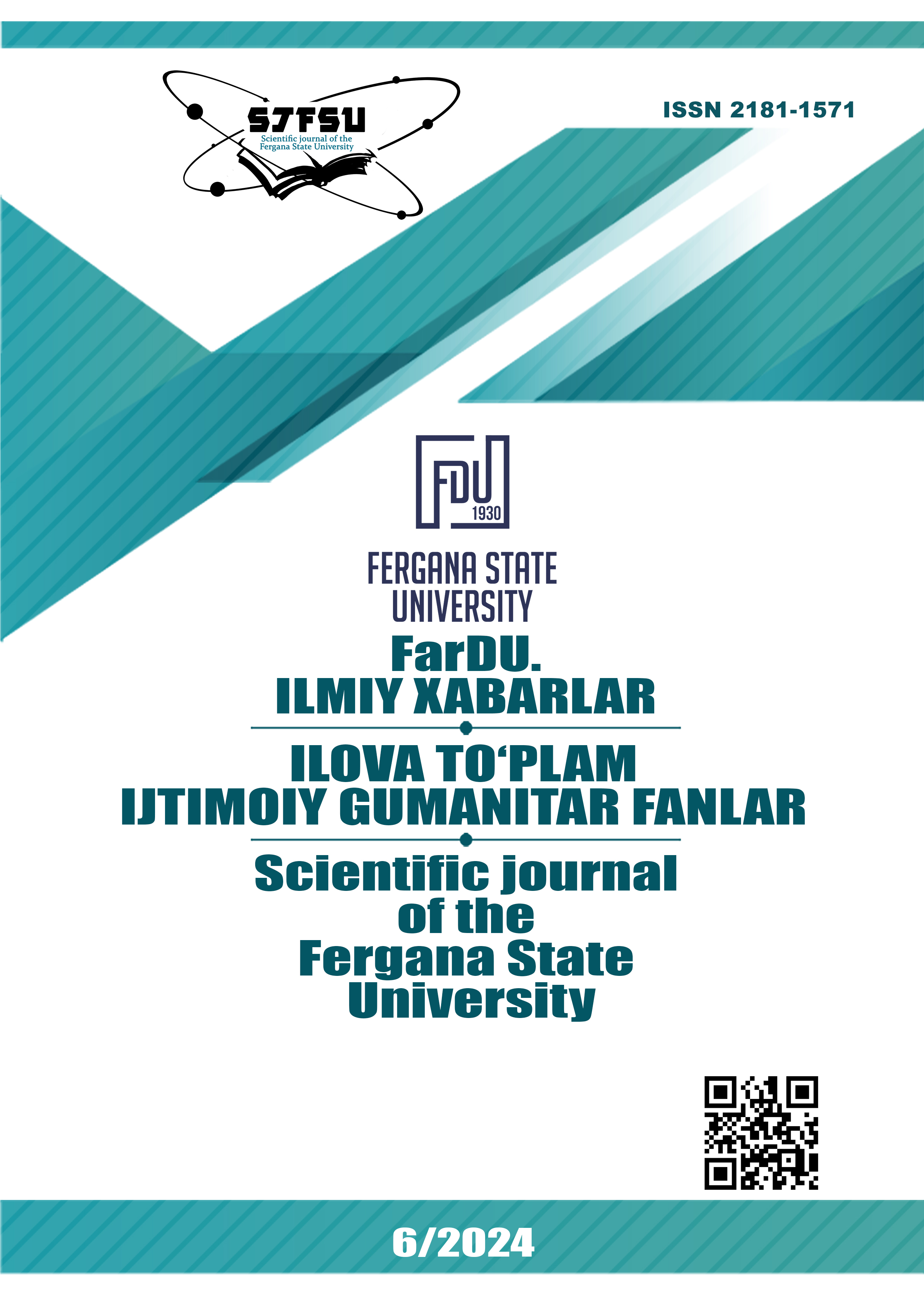THE EVOLUTION OF THE ARTISTIC LANGUAGE OF V. RASPUTIN AND KH. DUSTMUHAMMAD: STAGES AND CHARACTERISTICS
Keywords:
volution of artistic language, V. Rasputin, Kh. Dustmuhammad, style, literary features, syntax, lexicon, rhetoric, cultural influences, comparative literature.Abstract
The article is devoted to the analysis of the evolution of the artistic language of two prominent 20th-century writers — V. Rasputin and Kh. Dustmuhammad. The study covers the key stages of their creative work and identifies the characteristics of their stylistic development. It examines the distinctive features of the authors' linguistic craftsmanship during various periods of their lives and creative activity, the influence of sociocultural and historical factors on the style and form of their works, as well as the specific syntactic, lexical, and rhetorical structures in their writings. The article investigates how each writer's language reflects changes in world perception, social relations, and personal values. Additionally, the article notes the impact of tradition and innovation on the formation of Rasputin's and Dustmuhammad's artistic language, offering a comparative analysis of these features within the context of world literature.
References
Распутин В. Г. Прощание с Матёрой. – М.: Советский писатель, 1976. – 256 с.
Дустмухаммад Х. Ташкент: Издательство литературы и искусства, 1989. – 320 с.
Скляревская Е. Слово и образ в прозе Валентина Распутина // Вопросы литературы. – 2003. – №5. – С. 105-118.
Рахматуллаев А. Традиции и новаторство в прозе Хуршида Дустмухаммада // Литература и искусство Узбекистана. – 2001. – №4. – С. 87-92.
Саидов И. Национальная идентичность и историческая память в творчестве Хуршида Дустмухаммада // Известия Академии наук Узбекистана. – 2012. – №3. – С. 56-64.
Пьецух В. Методы символизации в деревенской прозе // Литературное обозрение. – 1984. – №2. – С. 45-52.
Казакова Н. Традиции и новаторство в творчестве Валентина Распутина // Русская литература. – 1990. – №6. – С. 103-111.
Шарипов Р. Узбекская национальная культура в прозе Хуршида Дустмухаммада. – Ташкент: Фан, 2005. – 200 с.
Downloads
Published
Issue
Section
License
Copyright (c) 2025 Scientific journal of the Fergana State University

This work is licensed under a Creative Commons Attribution-NonCommercial-NoDerivatives 4.0 International License.
Most read articles by the same author(s)
- Нигора Каримова , REFLECTION OF THE TIME: THE CONCEPT OF THE HISTORICAL NOVEL IN LITERATURE , Scientific journal of the Fergana State University: No. 3 (2024): Scientific journal of the Fergana State University. Application set (Social humanities sciences)
- Нигора Каримова , ETHICAL AND PHILOSOPHICAL MOTIFS IN THE PROSE OF V. RASPUTIN AND KH. DUSTMUKHAMMED , Scientific journal of the Fergana State University: No. 6 (2024): Scientific journal of the Fergana State University ADDITIONAL COLLECTION (Social humanities sciences)

